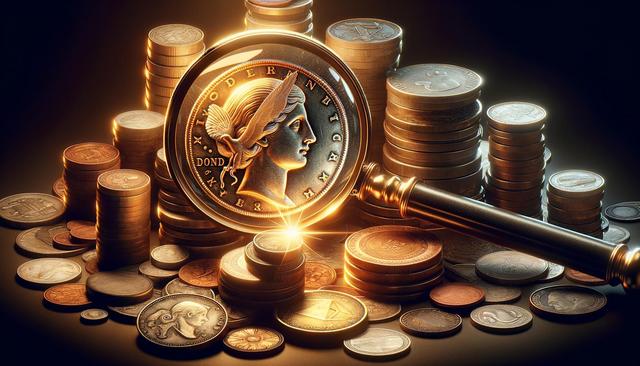How to Spot a Valuable Coin: A Beginner’s Guide to Coin Collecting
Identifying a valuable coin involves examining its age, rarity, condition, and historical significance. From mint marks to misprints, collectors and enthusiasts alike learn to spot hidden treasures in everyday currency, turning loose change into prized artifacts.

Understanding Coin Age and Historical Context
The age of a coin often plays a significant role in its value, especially when it’s tied to a rich historical context. Older coins, particularly those minted before the 20th century, are typically more sought after due to their scarcity and historical relevance. However, age alone does not guarantee worth. A coin from the 1800s may be less valuable than a mid-20th-century coin if the latter is rarer or in better condition. Understanding the time period in which a coin was made helps collectors appreciate its backstory and potential value.
Coins tied to major historical events or discontinued currency systems can also be more valuable. For instance, coins minted during wartime or during a transitional government period often carry a premium because of their limited production and unique designs. Collectors should pay attention to:
- Historical events tied to the coin’s minting
- Changes in political regimes or national symbols
- Anniversary editions or commemorative issues
Researching a coin’s origin and the socio-political environment of its time can reveal clues about its potential worth and desirability among collectors.
Recognizing Rare Coins and Limited Editions
Rarity is a major driver of coin value. A coin that was produced in limited quantities or was quickly withdrawn from circulation can be significantly more valuable than its more common counterparts. Some coins become rare due to minting errors or abrupt changes in design, while others were simply never widely distributed. Knowing how to identify these rare coins is essential for any collector or enthusiast.
Factors that indicate rarity include:
- Low mintage numbers
- Unique varieties or die combinations
- Misprints or errors (e.g., double dies, off-center strikes)
- Short circulation periods
Collectors often refer to coin catalogs or online databases to verify mintage figures and known varieties. Becoming familiar with these resources can significantly improve your ability to identify a coin with hidden value.
Evaluating Coin Condition and Grading
Condition is another crucial factor that affects a coin’s value. Professional grading services use a standardized scale, ranging from Poor (P-1) to Mint State (MS-70), to assess a coin’s state of preservation. Even a common coin can be worth more if it’s in excellent condition, while a rare coin in poor condition might fetch less than expected.
The following elements are considered in coin grading:
- Wear and tear on surfaces and edges
- Presence of scratches, dents, or corrosion
- Clarity of design details and inscriptions
- Luster and original mint finish
Obtaining a professional evaluation or certification from a reputable grading service can provide assurance about a coin’s authenticity and condition. For beginners, comparing your coin to high-resolution images of graded examples can help build a basic understanding of grading principles.
Spotting Mint Marks and Variants
Mint marks are small letters or symbols on a coin that indicate where it was produced. These seemingly minor details can make a significant difference in value. For example, a coin minted at a lesser-used facility may be rarer than the same coin produced at a major mint. In some cases, coins from the same year but with different mint marks can vary drastically in value.
Common mint marks to look for include:
- D – Denver
- S – San Francisco
- P – Philadelphia
- W – West Point
Some coins also have unique design features or variants that were only produced for a limited run. These include commemorative issues, proof coins, and coins with altered inscriptions or imagery. Keeping a magnifying glass or loupe handy can help you detect these subtle differences, which might indicate a higher value.
Using Reference Materials and Getting Help
Even seasoned collectors rely on reference materials to identify and assess coin value. Coin guides, price lists, and online forums are valuable resources for verifying a coin’s rarity, condition, and market demand. These tools can also help you avoid overestimating or underestimating the worth of a coin.
Some useful references include:
- Annual coin pricing catalogs
- Online databases with detailed coin images
- Numismatic association websites
- Local or online coin appraisal services
If you’re unsure about a coin, consider visiting a local coin dealer or attending a coin show. Experts can offer insights and often provide free or low-cost evaluations. Engaging with collector communities—either in person or online—can also help you learn from others’ experiences and expand your knowledge base.
Conclusion: Your Eye for Value Will Improve Over Time
Spotting a valuable coin is a skill that develops with research, observation, and experience. By understanding the factors that influence value—such as age, rarity, condition, mint marks, and historical context—you’ll be better prepared to recognize coins that stand out. Whether you’re just starting your collection or looking to refine your eye, staying informed and connected to the numismatic community will help you make well-informed decisions and enjoy the rewarding journey of coin collecting.